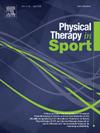探讨患有髌股疼痛综合征的女运动员下肢生物力学变量与加重疼痛、残疾和姿势平衡的关系
IF 2.2
3区 医学
Q1 REHABILITATION
引用次数: 0
摘要
目的:本研究旨在探讨髌骨股痛综合征(PFPS)女运动员下肢生物力学变量与疼痛严重程度、残疾和姿势平衡的关系。DesignCross-sectional研究。SettingBiomechanics实验室。165名女运动员被分配到PFPS组,160名作为健康对照组。主要结果测量:通过Kinovea软件程序测量动态膝外翻(DKV),通过通用测角仪测量胫骨扭转,通过高度卡尺工具测量舟骨高度。动态应激下的姿势平衡通过Biodex平衡系统进行量化,疼痛严重程度通过数值疼痛评定量表(NPRS)进行量化,残疾程度通过膝关节前疼痛量表(AKPS)进行量化。结果两组间dkv和胫骨扭转有显著性差异。DKV与疼痛(r = 0.451)、姿势平衡(r = 0.244、0.341、0.351)呈正相关,与残疾呈负相关(r = - 0.432)。胫骨扭转与失能呈负相关(r = - 0.339)。舟骨高度与测量变量无显著相关。结论慢肢生物力学,特别是DKV和胫骨扭转在女运动员的表现筛选中应优先考虑。本研究强调了将生物力学矫正策略纳入PFPS女运动员康复计划的重要性。本文章由计算机程序翻译,如有差异,请以英文原文为准。
Exploring the association of selected lower limb biomechanical variables on exacerbating pain, disability, and postural balance in female athletes with patellofemoral pain syndrome
Objectives
This study aimed to investigate the associations of selected lower limb biomechanical variables with pain severity, disability, and postural balance in female athletes with Patellofemoral Pain Syndrome (PFPS).
Design
Cross-sectional study.
Setting
Biomechanics Laboratory.
Participants
165 female athletes were assigned to the PFPS group and 160 as a healthy controls group.
Main outcome measures
Dynamic knee valgus (DKV) was measured via the Kinovea software program, tibial torsion was measured via a universal goniometer, and the navicular height was measured via a height caliper tool. Postural balance under dynamic stress was quantified via the Biodex Balance System, Pain severity via the numerical pain rating scale (NPRS), and disability via the anterior knee pain scale (AKPS).
Results
DKV and tibial torsion showed significant differences between groups. DKV positively correlated with pain (r = 0.451) and postural balance (r = 0.244, 0.341, and 0.351 for balance scores), and negatively with disability (r = −0.432). Tibial torsion negatively correlated with disability (r = −0.339). Navicular height had no significant correlation with the measured variables.
Conclusions
Lower limb biomechanics, especially DKV and tibial torsion, should be prioritized in performance screening for female athletes. This study highlights the importance of addressing biomechanical correction strategies into rehabilitation programs for female athletes with PFPS.
求助全文
通过发布文献求助,成功后即可免费获取论文全文。
去求助
来源期刊

Physical Therapy in Sport
医学-康复医学
CiteScore
4.50
自引率
8.30%
发文量
125
审稿时长
39 days
期刊介绍:
Physical Therapy in Sport is an international peer-reviewed journal that provides a forum for the publication of research and clinical practice material relevant to the healthcare professions involved in sports and exercise medicine, and rehabilitation. The journal publishes material that is indispensable for day-to-day practice and continuing professional development. Physical Therapy in Sport covers topics dealing with the diagnosis, treatment, and prevention of injuries, as well as more general areas of sports and exercise medicine and related sports science.
The journal publishes original research, case studies, reviews, masterclasses, papers on clinical approaches, and book reviews, as well as occasional reports from conferences. Papers are double-blind peer-reviewed by our international advisory board and other international experts, and submissions from a broad range of disciplines are actively encouraged.
 求助内容:
求助内容: 应助结果提醒方式:
应助结果提醒方式:


